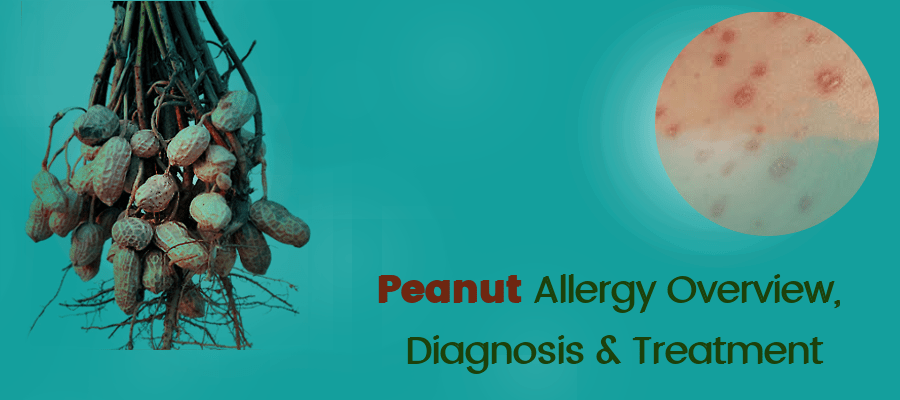It’s common to have an allergic reaction to the food we eat usually. Many people suffer from several types of food sensitivities or food intolerance. It’s our immune system that reacts to specific foodstuffs and lead to sort of food responses. Provided is an information about peanut allergy along with its symptoms, causes and possible treatment options.

What is peanut allergy?
Peanut allergy is one of the most common food allergies found worldwide. With someone having it, a small amount of peanuts can even be the worst. It can be a life-threatening ailment too. It’s mostly found in children. The preventive steps are rather more advised.
What are its symptoms?
The minutes after one is exposed to the peanuts, they would get allergic reactions. Several of the signs and symptoms of peanut allergies are as followed,
Less severe allergic symptoms
- Skin reactions with redness or swelling
- An itchiness in or out of the throat or mouth
- A plugged or runny nose
- Nausea or vomiting
- Shortness of breath
The most severe allergic symptoms
It’s anaphylaxis. The symptoms will include,
- Impaired breathing
- Severe tightness in the throat
- Quick decrease in blood pressure or rapid pulse
- Light-colored skin or blue lips
- Episodes of faints and giddiness
The anaphylaxis is a serious cause. An immediate epinephrine administration is the quickest peanut allergy cure for it.
When should I consult a doctor?
You can see your allergist/immunologist for peanut allergy diagnosis, allergy testing, and treatment and management plan.
If you see the peanut allergy responses getting badly deteriorated (especially in the case of anaphylaxis), call for an emergency care.
What are its causes?
- When your immune system fails to cope up with peanut proteins, you may get allergic response. It’s peanut exposure in the manners below that mainly causes this disease.
- Peanut allergic reactions can be caused by eating the peanuts, peanut butter or the food containing peanuts or peanut oil. A direct touch of peanuts to the skin can often lead to it too.
- There are many dietary items that may have an unintended use of peanuts into making of them. This is a kind of indirect administration of peanuts into a human body.
Additionally, you may get peanut allergy depending upon,
Your age – Especially, this condition is common in a child.
History of peanut allergy – One may also develop the recurrences of peanut allergy if they have a child history of it.
Other allergic reactions – If you are suffering from any other allergy, you are likely more prone to get it.
The peanut allergy can also be inherited from your family members with such allergy.
Peanut allergy testing and diagnosis
The doctor consultation is needed, where you can undergo some physical examinations based on your food patterns, symptoms and medical history. Your doctor may perform skin test, blood test or elimination diet program to determine if you have such food intolerance.
Peanut allergy treatments and drugs
There is no approved treatment for it. Avoidance is strictly required.
Your doctor can also prescribe you an emergency injection of epinephrine, depending upon an extent of your symptoms.
The preventive steps and appropriate therapy can certainly increase the success rates of peanut allergy treatments.
Feel free to contact us for your suitable peanut allergy treatment and management care. We are open at our Norwalk and Pomona centers!

